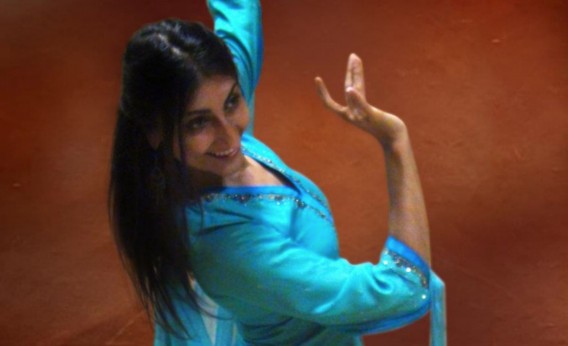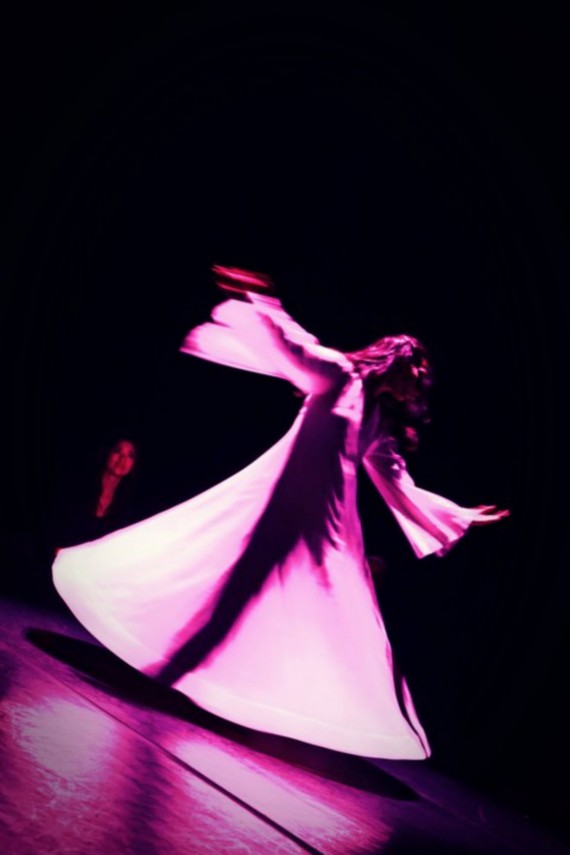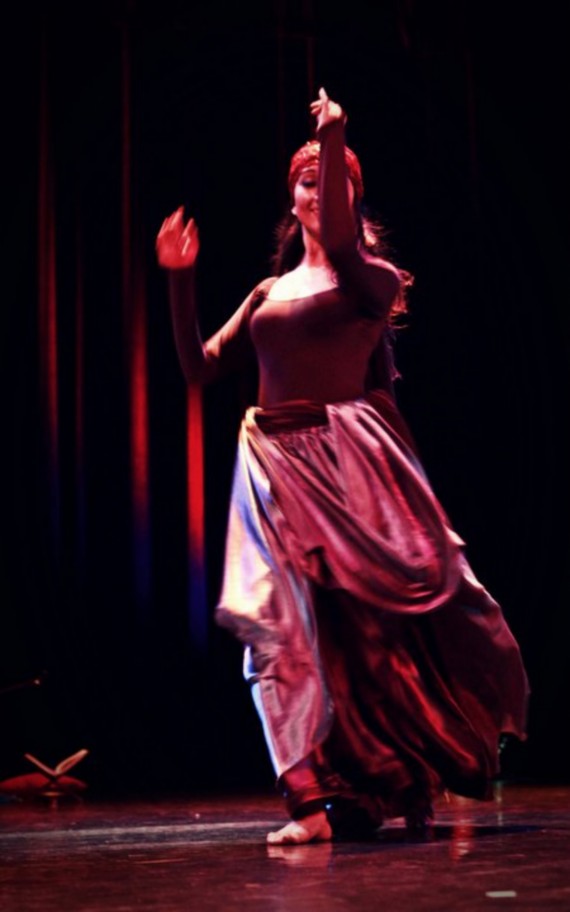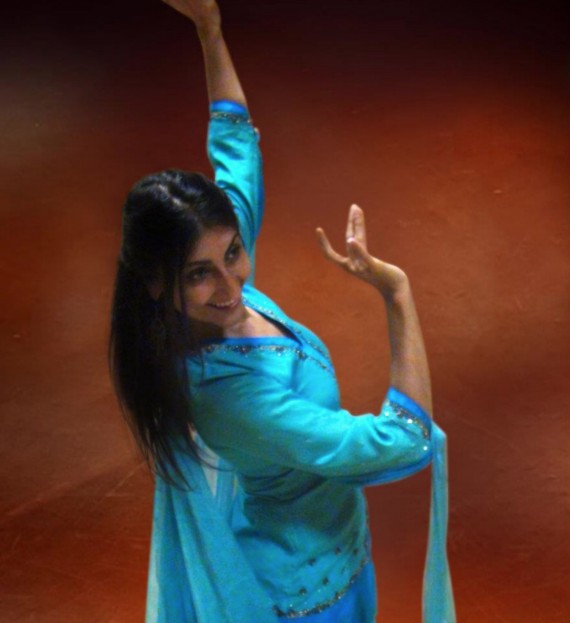adem
d'ethnomusicologie
Persian Dance
Sepideh Nayemi
Orient | Dance

The aims of this course include discovering and developing natural grace, learning to express yourself freely in movement and enjoying dancing to the subtle rhythms and melodies of traditional Persian music. Sepideh will work on basic technique, musicality, choreographed sequences and improvisation in order to guide you progressively through Persian dance. Discussions on the different styles of Iranian dance, customs and types of musical instruments will enable you to learn more about this universe that is rich in rhythms and colours.
Dance in Iran
Dance has an ancient history in Iran. From 2000BC sacred dances accompanied the cult of Mithras, an Indo-Iranian divinity. Then dance came into contact with traditional music and classical Persian poetry in the courts of kings who ruled over a great part of the Middle East. Over the course of the country's history, music and dance have both flourished and been threatened with decline. While traditional music and poetry have maintained mystical, artistic and popular dimensions up until today, dance has been reduced, limited and sometimes forbidden. Subsequently, classical Persian dance has been the victim of religious prejudice and lost parts of its identity. Today, only very abstract dances are authorized in the Islamic Republic of Iran. Forbidden or not, dance, just like poetry, has always played an important part in the social life of the majority of Iranians.
A Middle Eastern Context
Gifted with a strong and separate cultural identity, Iranian folk dance and music, especially in the border areas of the country, reflect the diverse perfumes and colours of the Middle East. Iran's rich diversity can be understood through its proximity to various countries. However, Iran is not an Arab country. Its language, Persian, is a language of Indo-European origin. Despite reciprocal influences and the Persian stamp on Islamic art, Persian dance and music remain distinct.
Bio
Born in Iran where she lived until adolescence, Sepideh was taken with poetry, music and dance from childhood. However, it was not until much later in Switzerland, during the course of her university studies that she discovered her true passion and talent for dance. Isabel Alama introduced her to Oriental dance. After completing further training, she became interested in other forms of Arabian music and dance. She explored a diverse universe : classical Persian dance, traditional Iranian dance, Indian classical dance (Kathak) and an intensive study of contemporary dance, which allowed her to obtain technique and develop her own dance. She also tried the Gypsy dance of Rajasthan (Kalbelyia), Afghanistan dance, Tadjik and Rom dance from Turkey and the Balkans.
Enriched by these experiences, Sepideh returned to the dance and music of her home country with a deeper understanding. Fascinated by classical Persian music, she studied the rhythms and modes from this music which allowed her to dance to an authentic and ancestral musical repertoire. She refined her knowledge through trips to Iran and following workshops with specialists dispersed around the globe.
Shahrokh Moshkin Ghalam, Hossein Fayazpour, Shahrzad Khorsandi, Etienne Frey, Surya Hilal, Melisjane Sezer, Leila Haddad and Ravi S. Mishra are among the dancers who have taught her.
Sepideh has taught Persian and Oriental dance for five years and has performed in diverse productions. Within the framework of an association she founded, she taught and participated in cultural events at the University of Geneva. In 2010, she produced her first original piece, A Window To See, in collaboration with 5 musicians. It brought together poetry, dance and music from two distinct cultures with strong identities, Persian and Arab, playing on their differences and similarities.
Through her rigorous artistic work, Sepideh has developed another aspect of Persian dane, while preserving its roots and authentic spirit. For Sepideh, the dance remains a tool of expression that allows her body and mind to get away from it all. In this sense, emotion occupies the central place in all of her creations, and she does not hesitate to push the limits when necessary, because dancing, is after all, about feeling free.
PLACE :
ADEM Maraîchers - 44, rue des Maraîchers - 1205 Geneva
TIMETABLE :
Mercredi :
Initiation & Beginners I cours: 17h00-18h15
Beginners I & Beginners II cours: 18h15-19h30
Intermediate cours: 19h30-20h45
Monday by Zoom: beginners 6:30 pm to 7h30 pm / medium 7h30 pm to 8h45 pm
TARIF :
to see with the teacher
Registration : Paiement by month or quarter on this accompt :
Association AFTAB - 6, Ch. Trolliet - 1209 GE
CCP: 10-244676-6
IBAN: CH5009000000102446766
CONTACT :
Association AFTAB +41 79 432 47 04
Email : assoc.aftab@gmail.com








Discover other classes
Dhrupad
Namrata Dentan
Dhrupad is the oldest surviving classical musical tradition in North India. The accuracy of the voice of sound frequencies and micro-tones are the essence of Dhrupad.
Flamenco Dance
Children & Adolescents - From 6 years
Michelle Gagnaux
Classes offer insight into flamenco through rhythm and movement. They are based on warm-ups, feet techniques and arm movements, as well as rhythmic exercises using palmas and other percussion mediums. Linked steps are also taught at a level adapted to the children.
Polyphonies of Georgia and the Balkans
The Aoédé : NEW WORKSHOP
Sylvie Zahnd
Les Aoédé is a small group of women brought together by the desire to explore and blend their voices in a friendly and benevolent atmosphere.
The repertoire is based on the polyphonies of Georgia but also of the Balkans, Greece, Turkey and Northern Europe.